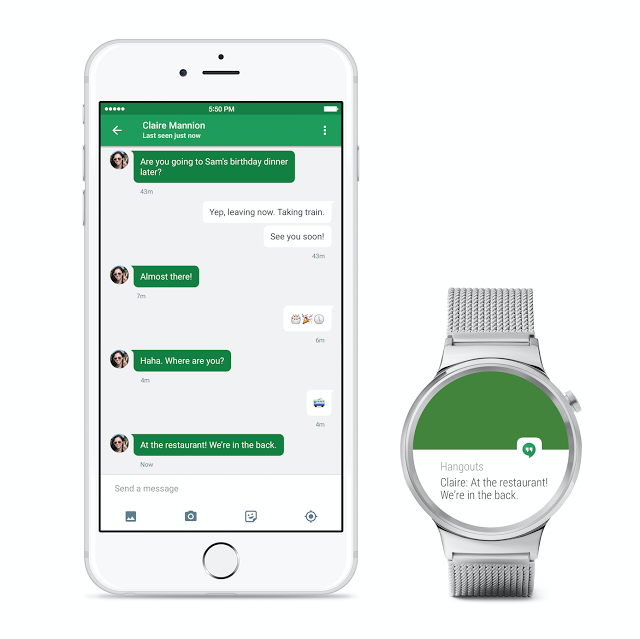Android Wear now supports iPhones -- is Apple Watch's dominance threatened?

With just 11.3 percent market share, Android Wear is not exactly a strong competitor for Apple Watch, which dominates the smartwatch space with 75.5 percent of all shipments. One of the reasons why Android Wear adoption is not as strong has been the lack of support for iPhones. This, however, should not be a problem any more.
Google today announces that Android Wear devices are now finally, and officially, compatible with iPhones, releasing the much-awaited iOS companion app on Apple's App Store. Here is what you need to know about it.
First of all, let's talk about iPhone compatibility. To use an Android Wear device, you will need an iPhone 5, iPhone 5c, iPhone 5s, iPhone 6 or iPhone 6 Plus that is running iOS 8.2 or newer. Basically, this list is identical to the one for Apple Watch, so, in this regard, there is a level playing field between the two platforms.
Google notes that Android Wear for iOS, the companion app which unlocks the iPhone compatibility, today works with LG Watch Urbane, suggesting that other Android Wear smartwatches are not supported at the moment.
"All future Android Wear watches, including those from Huawei [pictured at the top], Asus, and Motorola will also support iOS, so stay tuned for more", adds the search giant. Hopefully, it will not take long for more, current Android Wear devices to be supported by the Android Wear for iOS companion app.
Since I do not have an Android Wear smartwatch to test the integration with my iPhone 6 Plus, I cannot comment on whether anything is missing in terms of features. But, those who plan on using an Android Wear device with an iPhone will seemingly have access to the same feature set as when using an Android smartphone. That means, among other things, access to phone calls, messages, notifications, fitness tracking, Google Now integration, and more.
Now, on to the big question: How does this affect Apple Watch? Apple's smartwatch leads the market, accounting for the vast majority of shipments in the second quarter of the year, as mentioned in the first paragraph. It is more expensive than quite a few well-known Android Wear rivals, with a few exceptions -- LG's premium, $1,200 Watch Urbane Luxe springs to mind -- and it only works with iPhones.
Android Wear will surely get the attention of some iPhone users who are interested in buying a smartwatch, but given that it has not managed to really take off while compatible with the most-popular smartphone operating system it seems unlikely that Google's platform will become a real threat to Apple Watch any time soon.
However, iPhone users seem more willing to embrace smartwatches, so perhaps they will also be more open to the idea of getting an Android Wear device compared to fellow Android users. But one thing is for sure: Google has to open up support for lots more Android Wear smartwatches first.
Android Wear for iOS is available to download from Apple App Store.